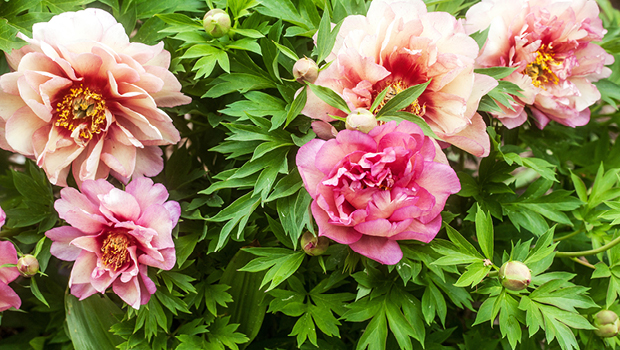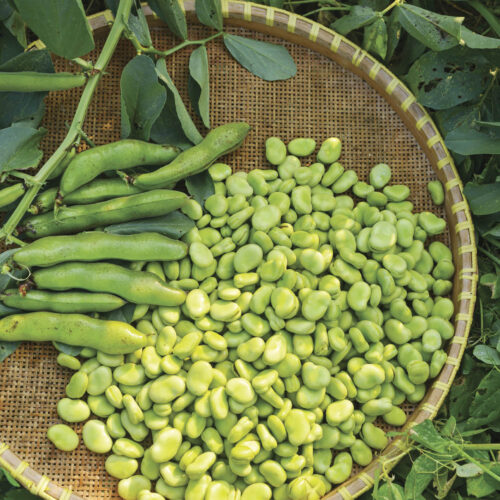The Magic of Peonies
2020-06-25T07:32:22+10:00
We love peonies at ABC Organic Gardener. Discover how to grow these beauties and add these generous flowers to your garden.
I fell in love with flowers slowly. I have always liked the idea of growing food, of self-sufficiency. It’s taken me a long time to recognise that growing and harvesting something beautiful and meaningful is just as vital – particularly during difficult times.
For me, flower growing has shifted from something peripheral to perhaps my main focus in the garden. Roses and dahlias; proteas and cosmos. I am teaching myself to make gorgeous bouquets and trying (not always successfully) to propagate my favourite roses from cuttings.
My toddler’s first word was “flower”, and one of his favourite things is to lift a bloom to his face, close his eyes and inhale with a loud “Mmmmmm!”. He particularly likes peonies. There is something so generous and buoying about these flowers; something that taps into a deep part of us.
Three main types
Peonies are available in three types – herbaceous, tree and Itoh.
• Herbaceous generally grow to a maximum of 60cm, can be planted bare-rooted and require cutting back to the ground over winter.
• Tree peonies are larger, with some varieties reaching up to 2.5 metres. They tend to be sturdier and more prolific flowerers than herbaceous peonies and require only light pruning to maintain ventilation and keep a good shape.
• The newest type of peony is called the Itoh or intersectional peony. Developed in Japan in the 1940s, Itohs are a hybrid of the herbaceous and tree varieties. Itohs are prized for embodying the best qualities of both tree and herbaceous peonies – the colour range of the herbaceous alongside the sturdiness and long bloom time of the tree peony.
“You get the best of both with an Itoh,” peony aficionado Ron Boekel explains. “With a mix of all three in your garden, you can get blooms from August to December.”
Amazing range
Peonies vary enormously in colour and shape, which adds to their popularity. The simplest types of blooms are the single flowers, with a row of petals around the centre. There is also the anemone, which can be identified by the guard petals around the petaloids (a flower part that resembles a petal).
Similarly, the Japanese variety has guard petals enclosing the staminoids (a flower part that looks like a stamen but doesn’t produce pollen).
There are also the showier types, which include the semi-double, double and bomb.
Colour-wise, peonies have gentle pastel colouring, vivid reds, oranges and purples through to dark shades that are almost black. Ron’s favourite is an elegant Japanese variety with huge blooms and dark red petals called ‘Rimpo’. He loves the dramatic colouring.
Grow your own
Tempted to grow your own peonies? They have a reputation for being difficult, but get the conditions right and you’ll find them hardy and prolific.
“‘Black Panther’, ‘Orion’, ‘Hestia’, ‘Hephestos’ or ‘Sunrise’ are great to start with,” Ron says.
“The best time to get peonies into the ground is autumn, because winter is prime time for peony root development.”
Peonies do best in colder regions, such as Tasmania and Victoria. They need winter chill for bud formation. However, they can be grown in cooler inland and mountainous regions further north.
Tree peonies can be grown as far north as Toowomba – anywhere that winter chills get down to around 5°C.
Before planting your peonies, prepare the soil in a well-drained position with lots of well-rotted organic matter.
“Manure has a good pH, compost is a bit more acidic,” explains Ron, who tends to use chicken and cow manure at his nursery.
RON’S TIPS
- Make sure peonies are well fed.
- Make sure your soil has a pH of 6.5–7.
- Plant herbaceous peonies no more than 5cm below the soil.
- Make space between your peony and other hungry rooted plants.
- Plant in the sun.
- Water sparingly.
For other garden ornamentals you might want to try, head to the following stories by our horticultural editor Penny Woodward:






